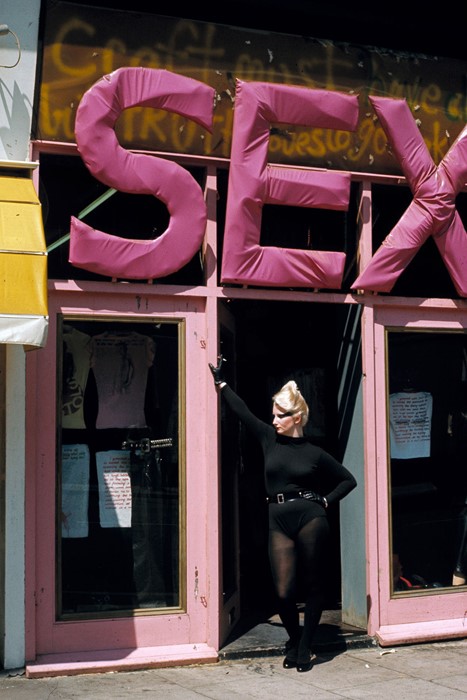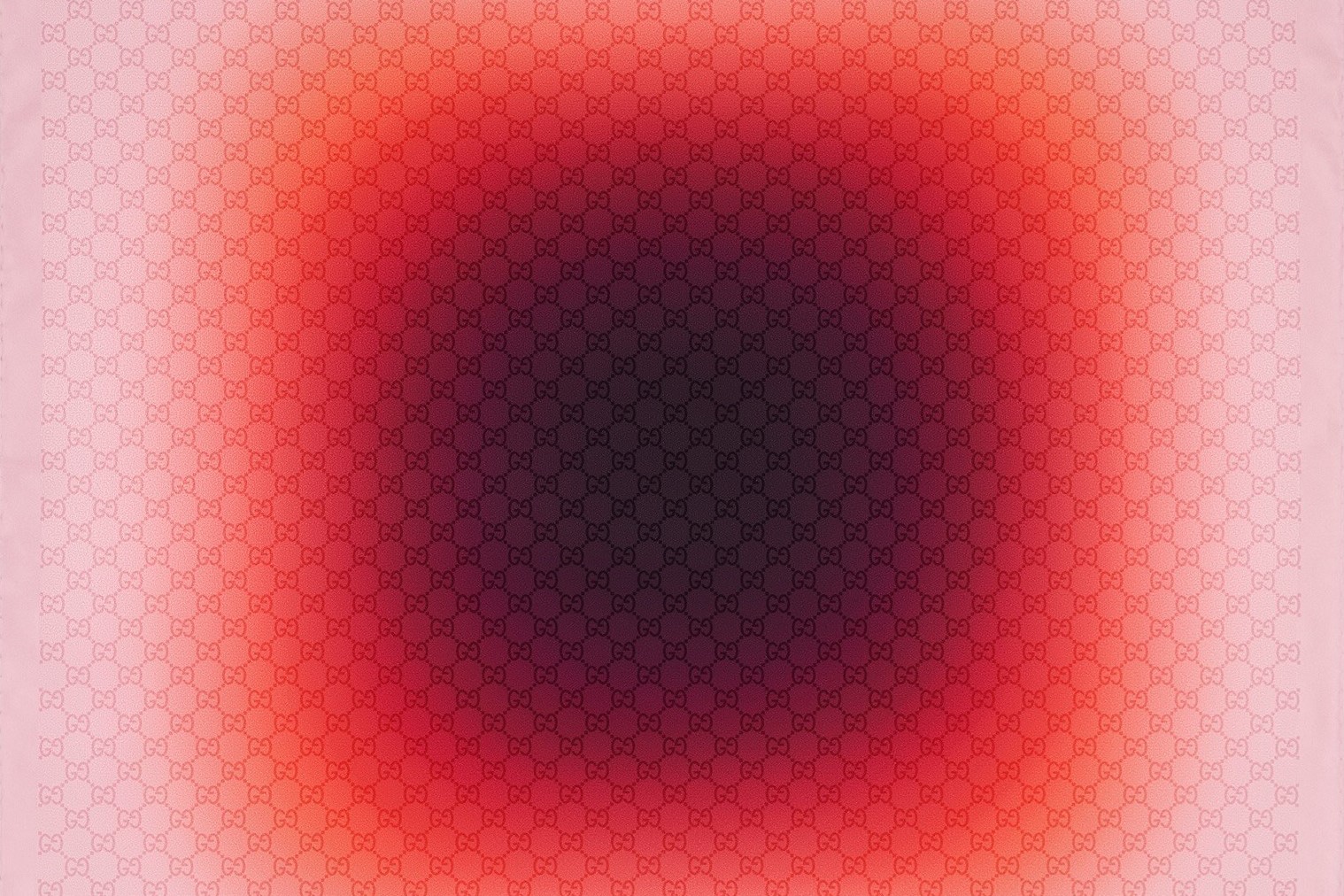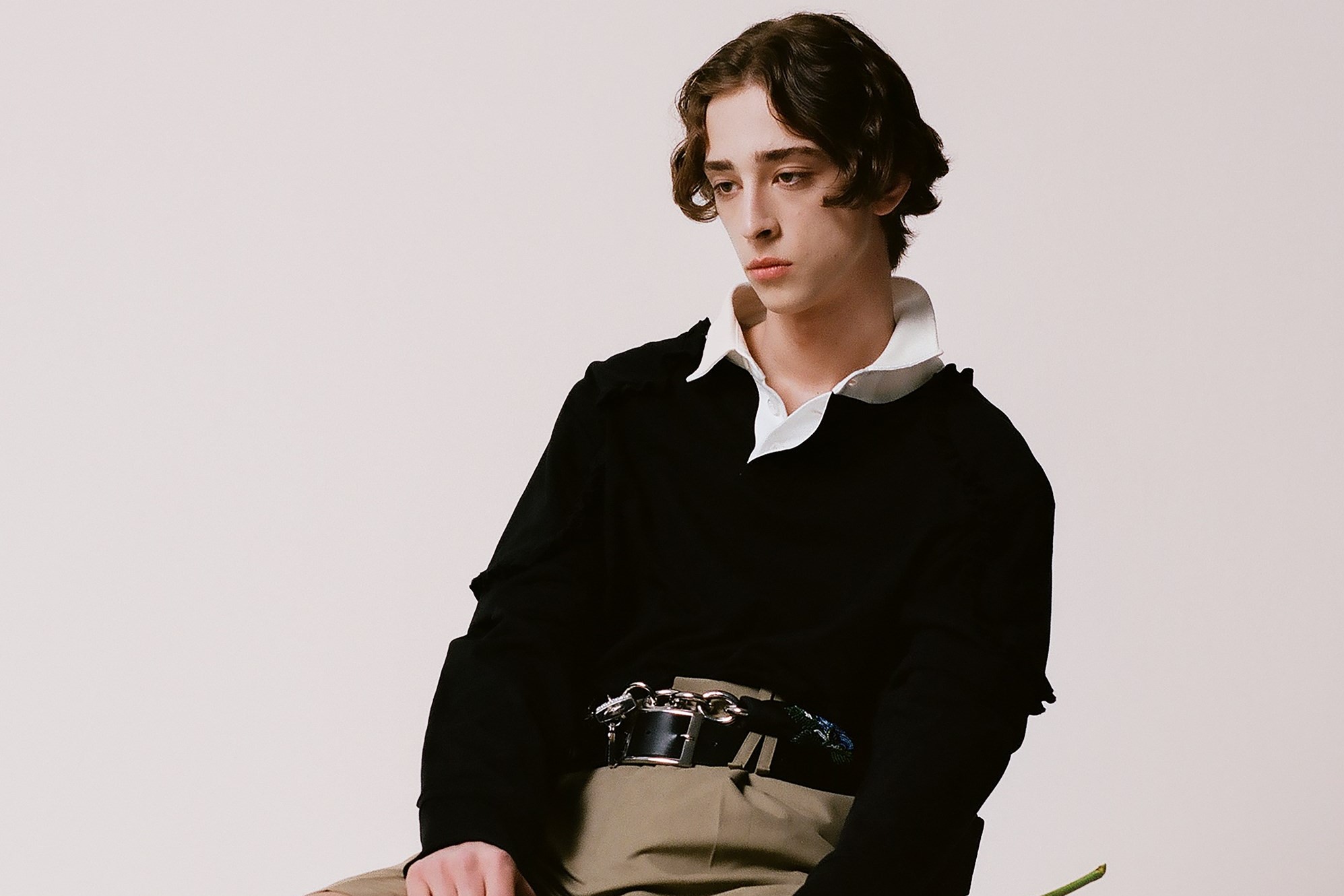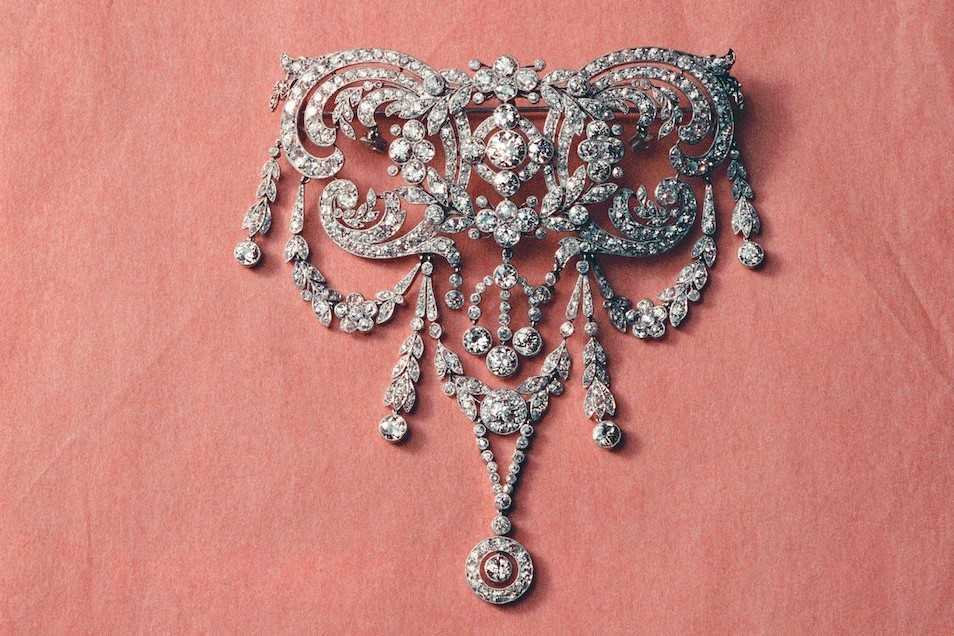As the U.S. turns to the humble item as a symbol of political solidarity, we recount a list of the safety pin’s starring sartorial roles
From its resonance as a symbol of punk rebellion in the 1960s, to its more recent reappropriation as a symbol of alliance with minority groups by political activists in the US, the safety pin has a rich and eclectic history in fashion. This season – one in which McQueen put it to sensational use in its A/W17 menswear jewellery pieces, and Jeremy Scott decorated Moschino’s accessories with them, in collaboration with pin pioneer Judy Blame – feels like a timely moment to consider its most exhilarating moments, both on the runway and beyond.
1. Vivienne Westwood’s Sex, 1974
When Vivienne Westwood and Malcolm McLaren rebranded their iconic London shop at 430 Kings Road, naming it Sex and filling its interior with barbed wire and studs, the couple also began to sell fetishwear and T-shirts and pants covered in safety pins. Westwood has made the safety pin a central motif in her aesthetic ever since, with punk rock icons and fellow lovers of the pin — the Sex Pistols’ bass player, Glen Matlock and future Pretenders frontwoman, Chrissie Hynde — both employed as shop assistants at Sex prior to their stratospheric musical careers.
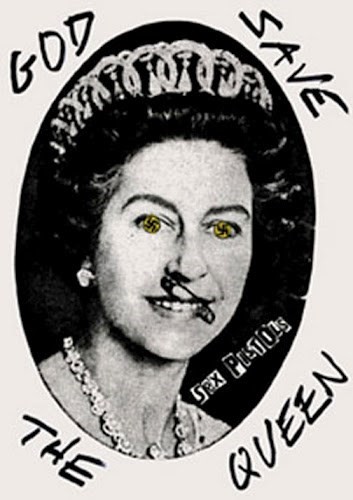
2. The Sex Pistols, 1975
The Sex Pistols became synonymous with the safety pin in the 1970s, but their attraction to it was as much practical as it was aesthetic; frontman Johnny Rotten eloquently claimed that the accessory “prevented the arse of your pants falling out.” Based on a Cecil Beaton-lensed photograph of Queen Elizabeth II, artist Jamie Reid reworked the image for the Sex Pistols’ infamous 1977 song God Save the Queen the Her Majesty sporting a safety pin through her nose, swastikas glinting in her eyes.
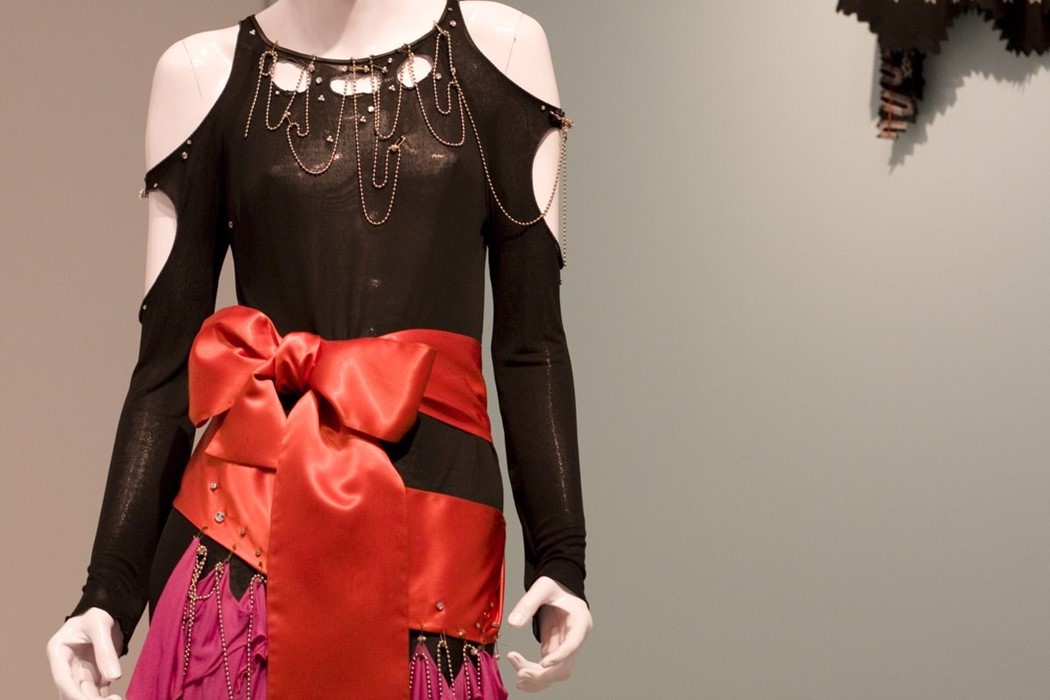
3. Zandra Rhodes, 1977
In 1977, designer Zandra Rhodes began working on a collection she called “conceptual chic” which went beyond her usual colorful silkscreened dresses. Among these pieces were black, purple and pink rayon jersey dresses and tops with intentional tears covered with golden safety pins. The safety pins held beaded chains and sashes in place — a clear nod to the punk movement, with an added aura of elegance; a number of the pins were adorned with pearl-like beads.
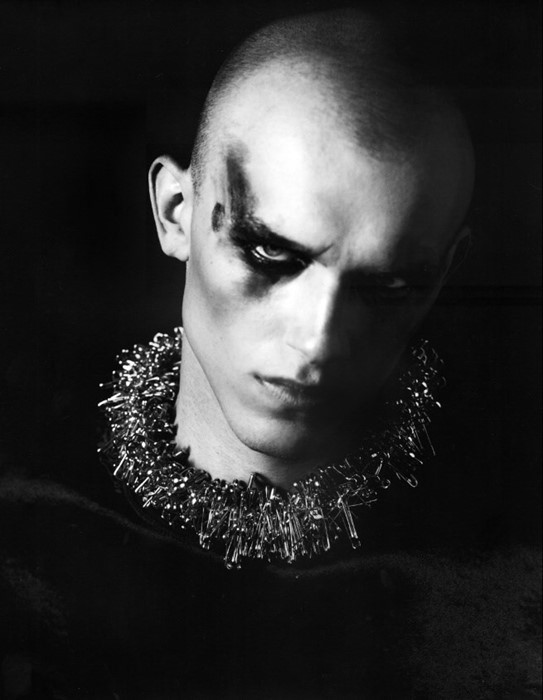
4. Judy Blame, 1977
Judy Blame first started using safety pins in his jewellery in 1977, at the height of the punk scene, and continued to use them in pieces he designed for the runway and cultural figures such as Björk, once telling AnOther that “I don’t think that a diamond is better than a safety pin; to me it’s just a thing or a shape”. As Boy George wrote in his autobiography Straight, Blame would arrive with “a bag of safety pins and a cork” and would create “a fashion revolution” – and Blame’s distinct aesthetic remains impactful throughout the industry, appearing this season in a collaboration with Jeremy Scott for his A/W17 Moschino collection, which presented the jeweller’s proclivity for the pin at it best: he embellished berets and blazers with buttons and safety-pins for his own, radically appealing take on post-apocalyptic dress.
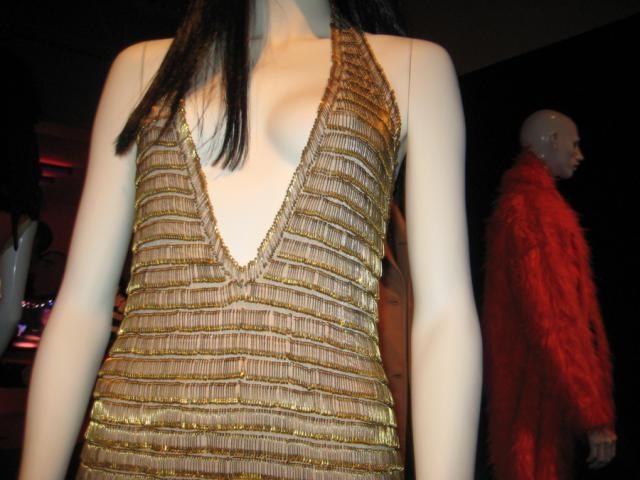
5. Stephen Sprouse, 1987
According to a 1987 article in The New York Times, “Just when you thought it was safe to go shopping in SoHo, Stephen Sprouse is returning with shirts studded with safety pins, 11-inch-long miniskirts in olive-drab melton and Day-Glo camel-colored flannel suits.” The rebel designer placed safety pins on denim mini-skirts and saturated dresses worn by Debbie Harry with the humble adornment. Viewed from a distance, the textural effect in Sprouse’s designs was so strong that the safety pins resembled something new, with one particular dress constructed of gold safety pins appearing as though covered in luxe fringing.
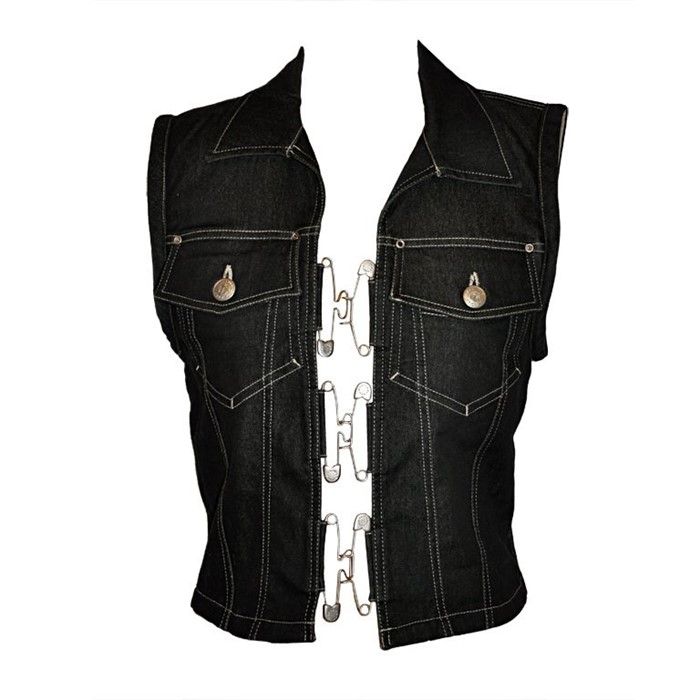
6. Jean Paul Gaultier’s Safety Pin Jackets and Belts, 1990
Jean Paul Gaultier, the enfant terrible of French fashion design, used oversized safety pins as unconventional closures for jackets and waistcoats in place of buttons or zips on runway pieces during the early 1990s. On the jackets, the safety pins both revealed and concealed the body, creating an unexpected affirmation of the everyday in true J.P.G. style.
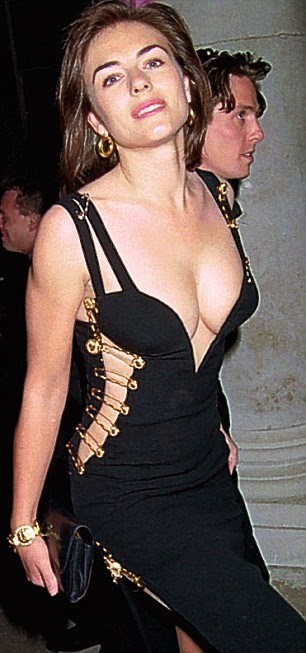
7. Elizabeth Hurley’s Versace Dress, 1994
Actress Elizabeth Hurley shocked the public at the 1994 premiere of Four Weddings and a Funeral in a now-iconic Versace safety pin dress. The slim fitting black silk and lycra dress exposed her skin on both sides with oversized gold safety pins, leaving very little to the imagination. She once said of the dress, “Unlike many other designers, Versace designs clothes to celebrate the female form, rather than eliminate it”.
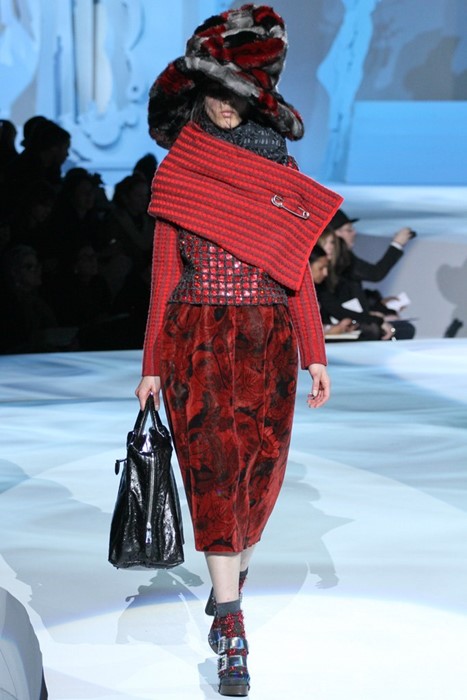
8. Marc Jacobs, A/W12
For the designer’s A/W12 collection, Marc Jacobs sent models down the runway in a shabby chic collection of oversized knits and comfy sweaters, scarves doubled up around models’ necks. Jacobs affixed massive safety pins to these bundled scarves and sweaters, creating a contrast of hard and soft textures. Wool stoles, Pilgrim-inspired shoes with glittering buckles and multi-colored mink hats were ubiquitous, and Jacobs was said to be inspired by fabulous fashion eccentrics Anna Piaggi and Lynn Yaeger.
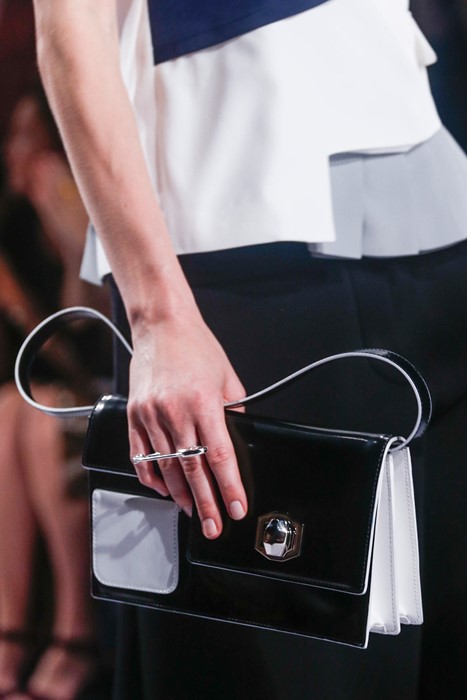
9. Viktor and Rolf, S/S14
For this particular collection, the duo crafted a large safety pin earring that appeared to be piercing through the entire ear from top to bottom. The accessory was a new take on the 1970s punks piercing their own earlobes with pins of regular size. The designers also toyed with the idea of a school uniform reworked, with innovative pleating, studs and miniature safety pins on skirts and collars, while further gargantuan safety pins were reimagined as rings and as zipper pulls on clutches.
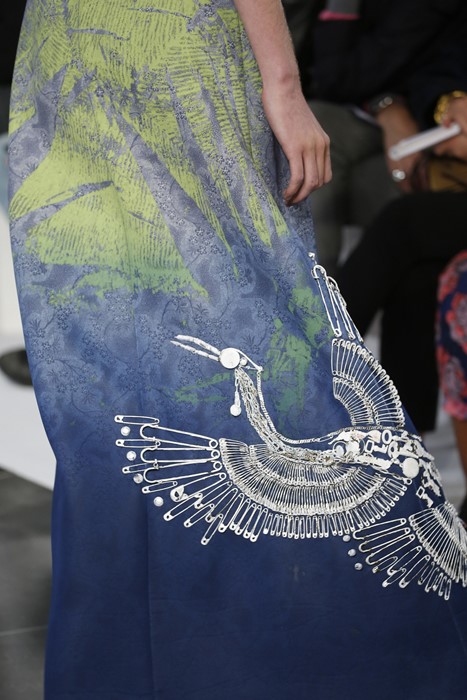
10. Maison Margiela, S/S16
In the hands of John Galliano, the modest safety pin became something else entirely. For his S/S16 collection at Maison Margiela, the designer paraded models down the runway wearing gowns covered in smattering of safety pins forming intricate imagery: birds on the sides of dresses and detailed chains on the backs of jackets, for example. A mix of candy-coloured beehive hairstyles and white fishnets brought to mind the clashing of the punk subculture with the artefacts and values of Americana. Galliano taglined the collection ‘Lo-Fi, Sci-Fi’.
